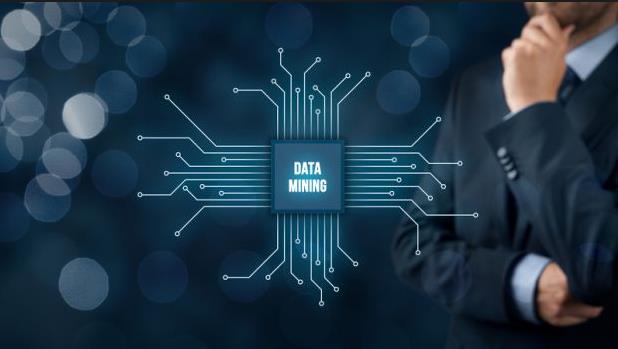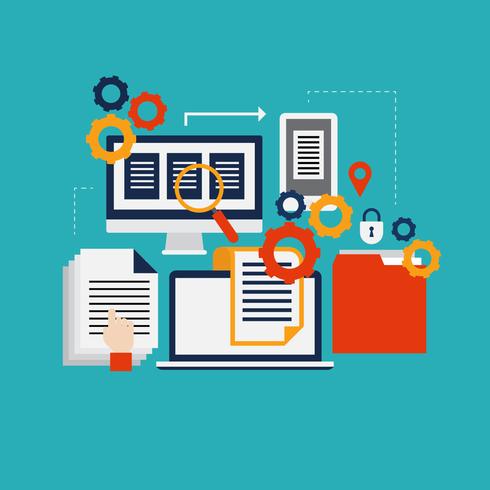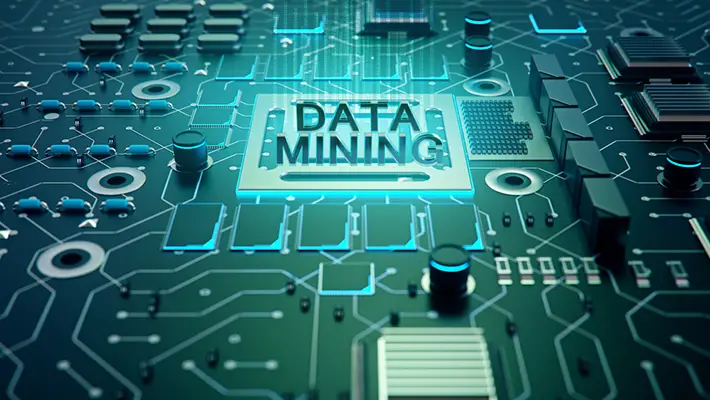Today we are going to talk about data mining and its advantages for companies. In recent years, data mining has attracted a lot of attention in the information industry. The main reason is that there is a large amount of data, which can be used, and there is an urgent need to convert this data into useful information and knowledge. It can then be used in various applications, such as business management, production control, market analysis, engineering design, and scientific exploration.
Data mining is an important topic in the field of artificial intelligence and database research. It refers to the process of revealing hidden, previously unknown, and potentially valuable information from a large amount of data. It is also a decision support process, which is mainly based on artificial intelligence, automated analysis of business data, inductive reasoning, and finding potential patterns from it.
What is data mining?
Data Mining or Data Mining, as it is known in our language, is a technology composed of a method or a set of analytical methods and statistical tools that extract, collect and analyze large amounts of information (data) from a structured database of a company. In this way, it automatically discovers useful trends, patterns, and rules of customer behavior. Data that support the implementation of marketing plans. In short, it extracts useful information from the collected data.

Data mining is a technology that strongly supports CRM, i.e. methods and strategies for forming good long-term relationships between companies and customers based on deep knowledge of each customer. By analyzing data such as customer buying behavior, it is used to classify products, predict the buying rates of a certain segment, and discover as much data related to products and customers as possible. Data mining has become indispensable for marketing.
Increasing machine power, network expansion, the rise of open data, and the reduction of information collection and retention costs have resulted in companies and individuals obtaining a large amount of information of various types and quality that can be used for data mining. Consequently, data mining is also attracting a lot of attention as an excellent means to effectively utilize Big Data.
What tools and techniques are used for data mining?
Having a lot of information is a great advantage for companies as long as they know how to make the most of it. However, there is no point in having a great treasure if you cannot reach it. The same applies to all the information that reaches the company. In fact, it is necessary to have the right tools and techniques to make the most of the information collected. Nowadays, a great deal of software has been developed for this purpose.
There are different types of data mining tools available in the market. Most of this software is available in Windows and Unix versions and each has its own strengths and weaknesses. In fact, many of them monitor data and highlight trends from the desktop. Even capturing information that resides outside of databases sometimes. Let’s take a look at some of the most popular tools below:
- Rapid miner
- Weka
- Orange
- Knime
- Rattle
- Tanagra
- XL Miner

As for the techniques used, it is somewhat similar to the tools. There is a variety of them and all of them are good. Therefore, it could be a bit risky to say that one is better than another since it will depend on the purpose pursued, which may vary from one company to another. Let’s see below what are the main techniques when talking about data mining:
- Classification analysis
- Learning of association rules
- Anomaly or outlier detection
- Clustering analysis
- Regression analysis
What are the advantages of data mining for companies?
Among the most important advantages that the company obtains from the implementation of data mining we can mention:
- Discovering the information that you did not expect to obtain. Thanks to its operation, it allows making many different combinations of the different data obtained, achieving new discoveries with its results.
- It is able to quickly and reliably analyze multiple databases with a huge amount of data.
The results obtained are easy to understand and do not require great technical knowledge for their interpretation. - Thanks to the information collected and analyzed, it allows the company to classify existing customers as well as to find, attract and retain new ones.

- It allows companies to try to satisfy the needs of users by offering the products or services they demand. This is because by knowing the trends and search patterns of its customers, the company is in a better position to create the necessary offers to meet the needs of its users.
- The models obtained can be verified through statistical analysis. Thanks to this, it is possible to verify that the results and predictions obtained are reliable.
- It helps to reduce costs and explore new businesses. With the knowledge the company avoids the trial and error policy, which translates into an important cost reduction. It also allows the company to venture into new fields according to the patterns observed in users.
What are the stages of data mining?
Data mining has become an independent discipline during the last decades. However, to achieve its best performance it requires a systematic process. This process is essential within data mining to achieve an efficient and goal-oriented way of working. To carry out the knowledge discovery process in a reliable and reproducible way, the CRISP-DM standard has been established as a guideline. The CRISP model comprises 6 phases necessary in data mining.

Business understanding, in this first phase goals, is defined and task information is exchanged. In addition, appropriate procedures for the task are determined. The second phase is Data understanding, in this phase, the quality and reliability of the data is checked. What data is available? What characteristics were surveyed? Etc. Data Preparation is the third, here variables are coded or transformed as needed. And appropriate procedures can be used for missing data. Experience has shown that this phase takes most of the time.
Modeling is the next phase and is where the necessary procedures are carried out to answer the questions. Generally, different parameters must be varied and different models created. Evaluation, or assessment, is the phase of comparison of the models created from CRISP-DM predictive analytics. For this, several parameters of the model quality are used. And finally, the Provision of results or deployment, the step in which the results obtained are finally summarized, processed, and presented in a comprehensible way.





